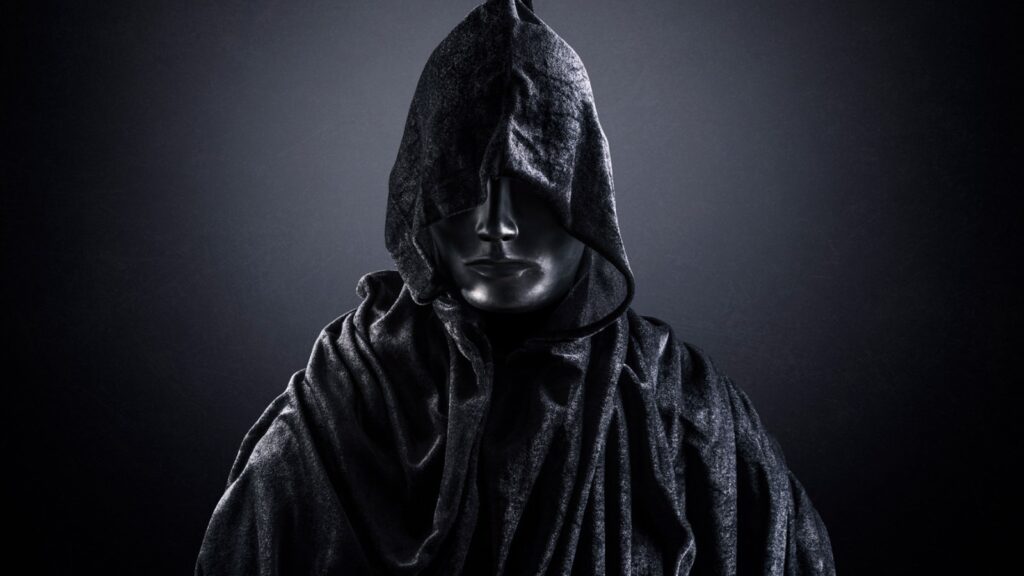Justice for ‘The Unknown,’ the Roald Dahl Character That Wasn’t
It’s just a fact that, for all their wonder and whimsy, Roald Dahl‘s children’s books can be terrifying. The heroine of Matilda, abandoned to a strict school by uncaring parents, must survive the cruelties of the headmistress, Miss Trunchbull. Unlike the friendly giant of the title, the other giants in The BFG snatch humans to eat from their beds every night. The Witches concerns a conspiracy of demonic crones bent on eradicating kids altogether.
In other words, Dahl’s often macabre fantasies are not safe spaces (as we were reminded in last year’s debate over his literary estate and publisher reissuing 17 of his young adult novels with some “offensive” language amended). Even Charlie and the Chocolate Factory sees a bunch of brats inventively dispatched in industrial mishaps when they fail tests of good etiquette. Which could partly explain why images from “Willy’s Chocolate Experience,” a knockoff event based on the story that was haphazardly staged in a warehouse in Glasgow, Scotland last weekend, went so viral: in Dahl’s world, children are often introduced to unpleasant adult realities. And this reality was particularly unpleasant.
Between the smattering of oversized candy props and the unfortunate actors hired to play Willy Wonka and Oompa Loompas, there were just enough details to suggest Dahl’s vision — or, more precisely, the film adaptations of it. Yet one of the “stars” of this experience was a figure mentioned in neither the original tale nor any version since: a black-cloaked, silver-masked entity referred to as “The Unknown,” who was seen emerging from behind a mirror to menace some whimpering youngsters. The character became a meme in its own right thanks to its blatantly non-canonical status, mysterious backstory, and odd, twitchy movements.
So, just where did The Unknown come from? It would appear to be a creation born of artificial intelligence. Like all the advertising materials and artwork that enticed families to buy a ticket for this dismal tour, the script for the performers was generated by AI — the organizer, Billy Coull, has a history of using such tools to advance his dubious business ventures — and lacking in a certain sophistication. (He did not respond to Rolling Stone‘s request for comment.) The muddled 15-page outline even includes lines for guests who would have no familiarity with the material and specifies the audience’s reactions to different moments in the narrative.
What the document does convey, however, is that The Unknown is supposed to be the main antagonist of the piece. Willy Wonka (or, sorry, “Willy McDuff”) explains early on that within the “ancient walls” of the factory “lurks a tale not yet told, of an evil chocolate maker known only as the Unknown.” This fiend, Willy says, is out to steal one of his most prized inventions, the “Anti-Graffiti Gobstopper,” a magical sweet that can… clean stuff, or something. Yeah, don’t worry about it.
After a couple of creepy encounters, Willy is meant to have a battle with The Unknown that culminates with a spectacular light show this group had no prayer of pulling off. The hero prevails as his rival is “gently swept up by a robotic vacuum, humorously ending the confrontation.” Sure!
Alas, visitors got no such tidy resolution, and in the chaotically improvised scenes they did see, the Unknown remained an inexplicable, possibly traumatizing horror. (It should be said that the actor is hardly to blame; on Facebook, one parent claimed that The Unknown was played by a 16-year-old girl doing her best under the circumstances, and another performer confirmed that a “young actress” took on the role.)
But, viewed another way, did the Unknown not deliver something of the shadowy dread that has made Dahl’s novels enduring touchstones to generations of readers? The plot about an attempt to filch a special gobstopper is, of course, lifted directly from Willy Wonka and the Chocolate Factory (1971), in which another candy maker named Slugworth seeks to undercut his competition. The Unknown, by comparison, is a fascinating extraction of Dahllian horror by a piece of software trying to process his writing.
That’s not to say Dahl has been outdone by a chatbot. In fiction for children and adults alike, he had a knack for malevolent presences: his chilling short story “Man from the South,” for instance, describes an apparently wealthy traveler who makes unusual bets with strangers he encounters — and cuts off one of their fingers if they lose. No doubt he would have written a creature more richly imagined (and logistically consistent) than The Unknown, had he ever suffered the indignity of translating Wonka’s chocolate factory into a pop-up theme park.
Still, an AI had to generate a new interactive scenario based on existing Wonka lore, complete with a threatening element for drama, and there’s something to be said for its crummy solution — this ghost in the machine. It’s a doomed attempt to grasp Dahl’s darkest impulses, an abject failure of imitative art, and all the funnier for those very reasons. It ties the whole occasion together. You’ve got to hand it to The Unknown: it’s a concept that sticks with you.
Whether we eventually get the promised statement from the actress who portrayed this phantom, or Dahl’s family, or his publishers and literary estate, it seems The Unknown will be enshrined as an important footnote to a beloved classic. And deservedly so. Whereas a photo of a sad Oompa Loompa standing next to what resembles a home meth lab will naturally inspire countless memes, The Unknown gives us more than a peculiar image — it is, as the name implies, a haunting question without an answer. Ridicule a half-baked monster all you want, but there is the real unknown, and it’s everywhere.
Come to think of it, you might want to check behind your mirrors.





